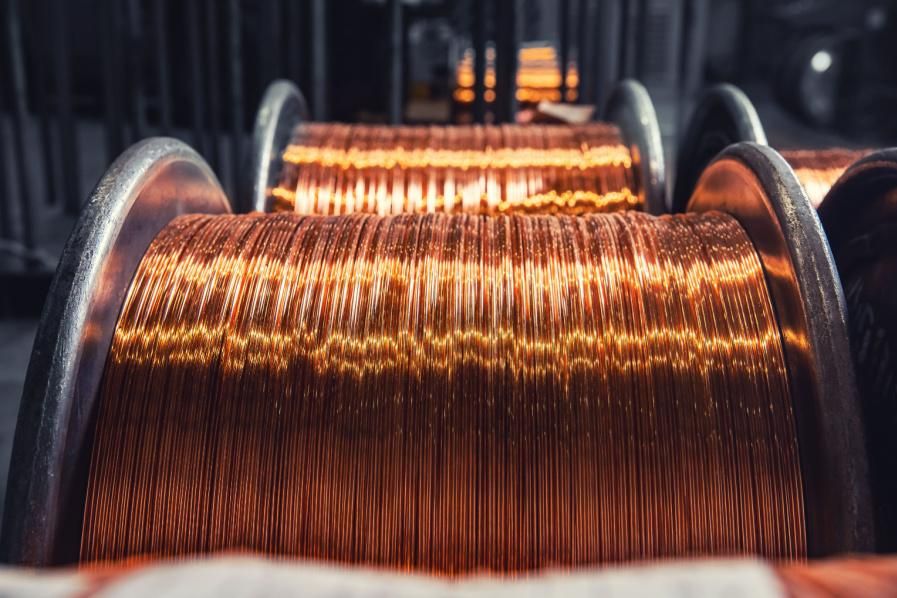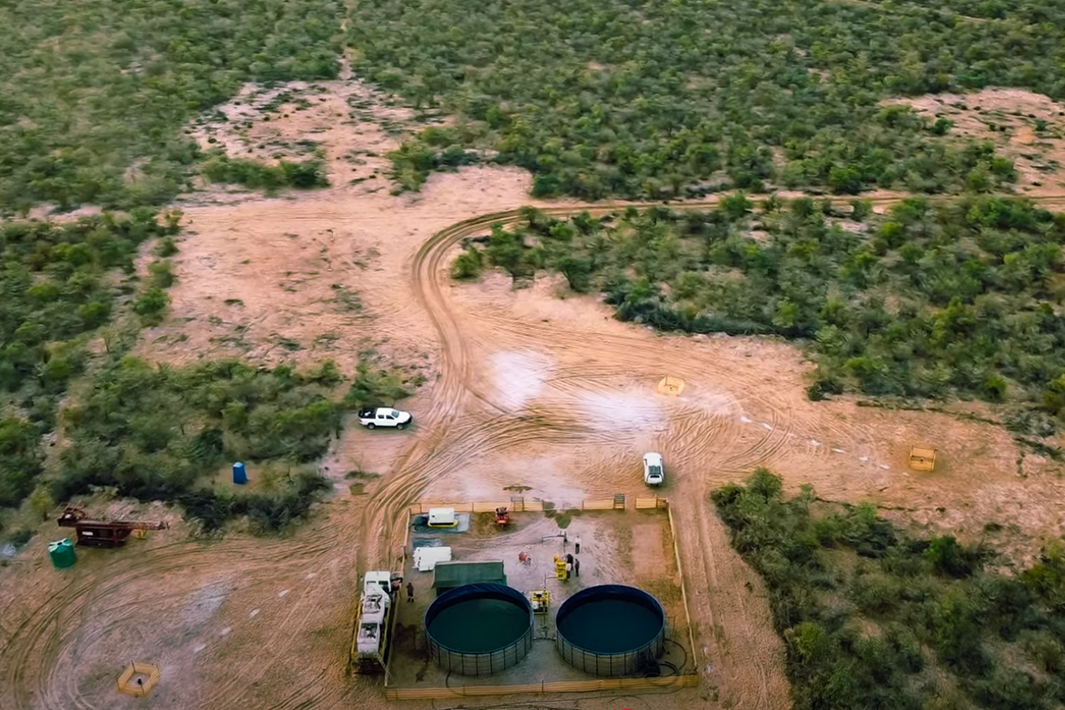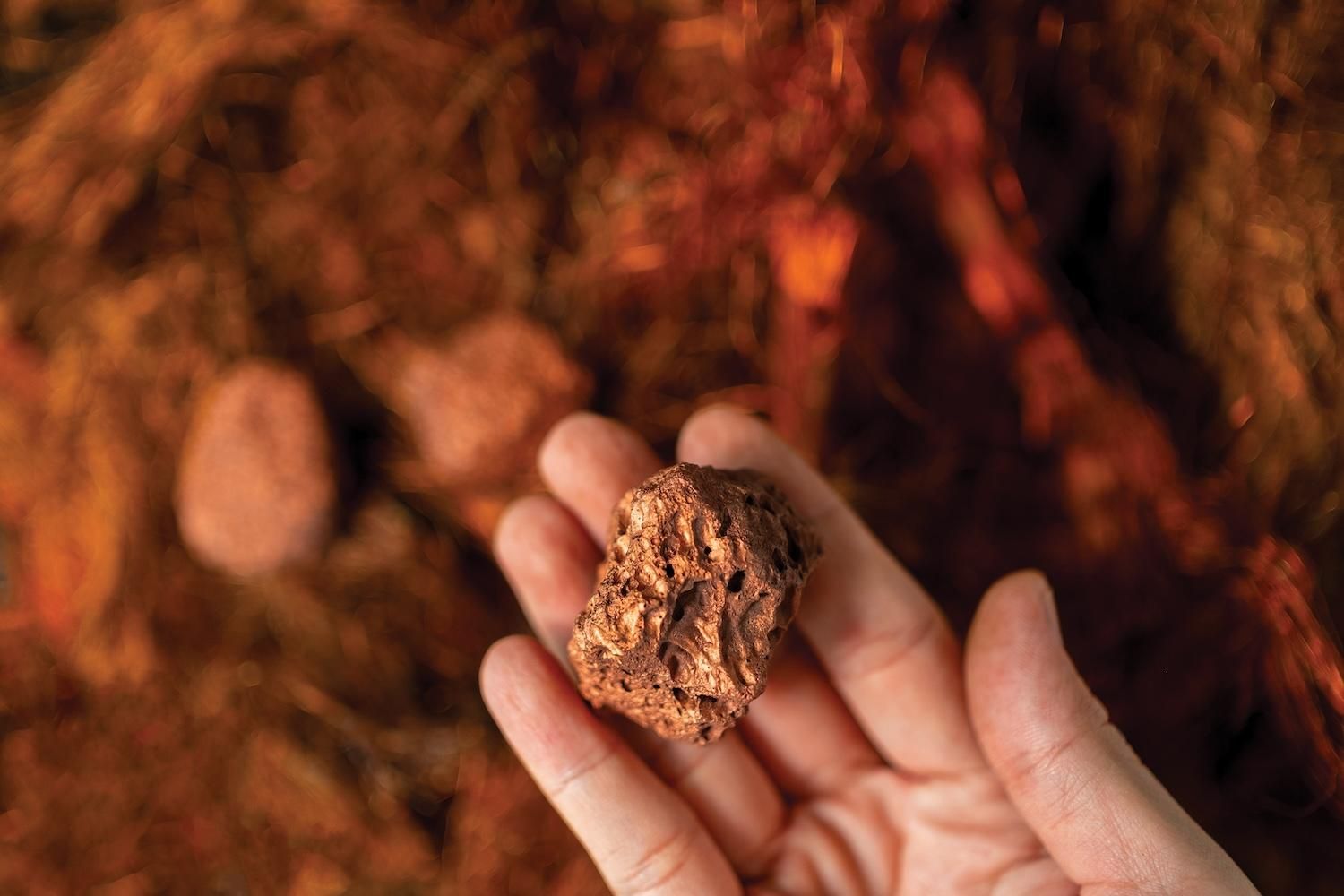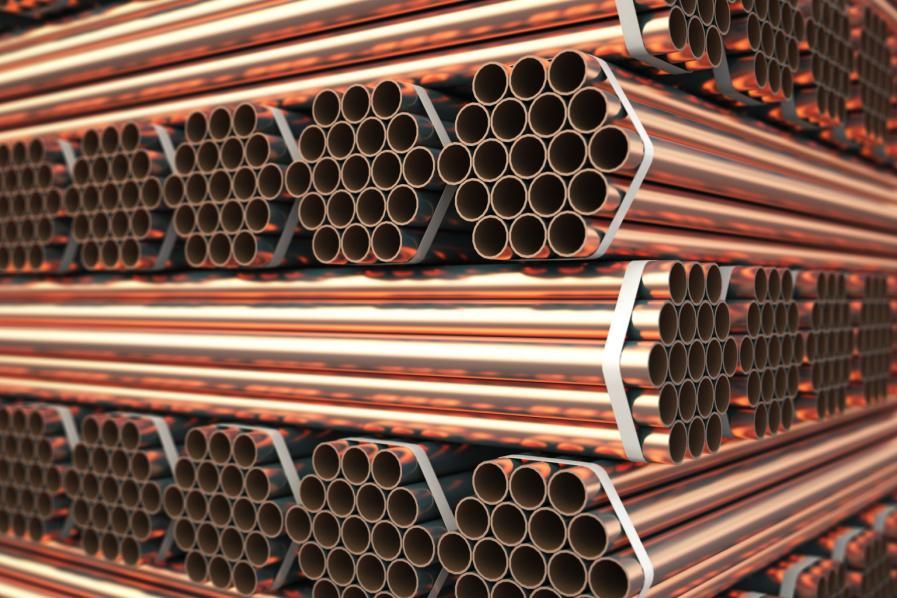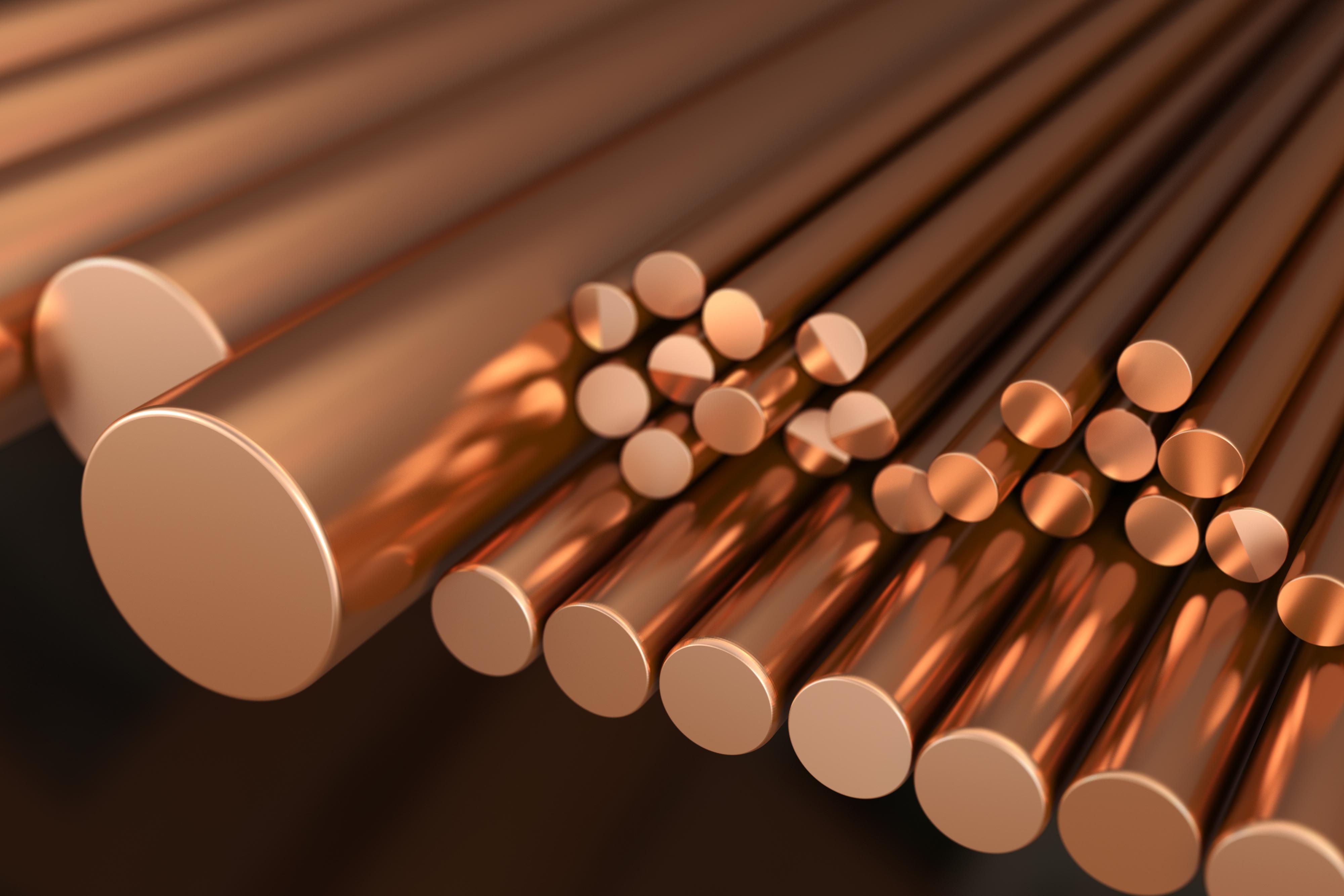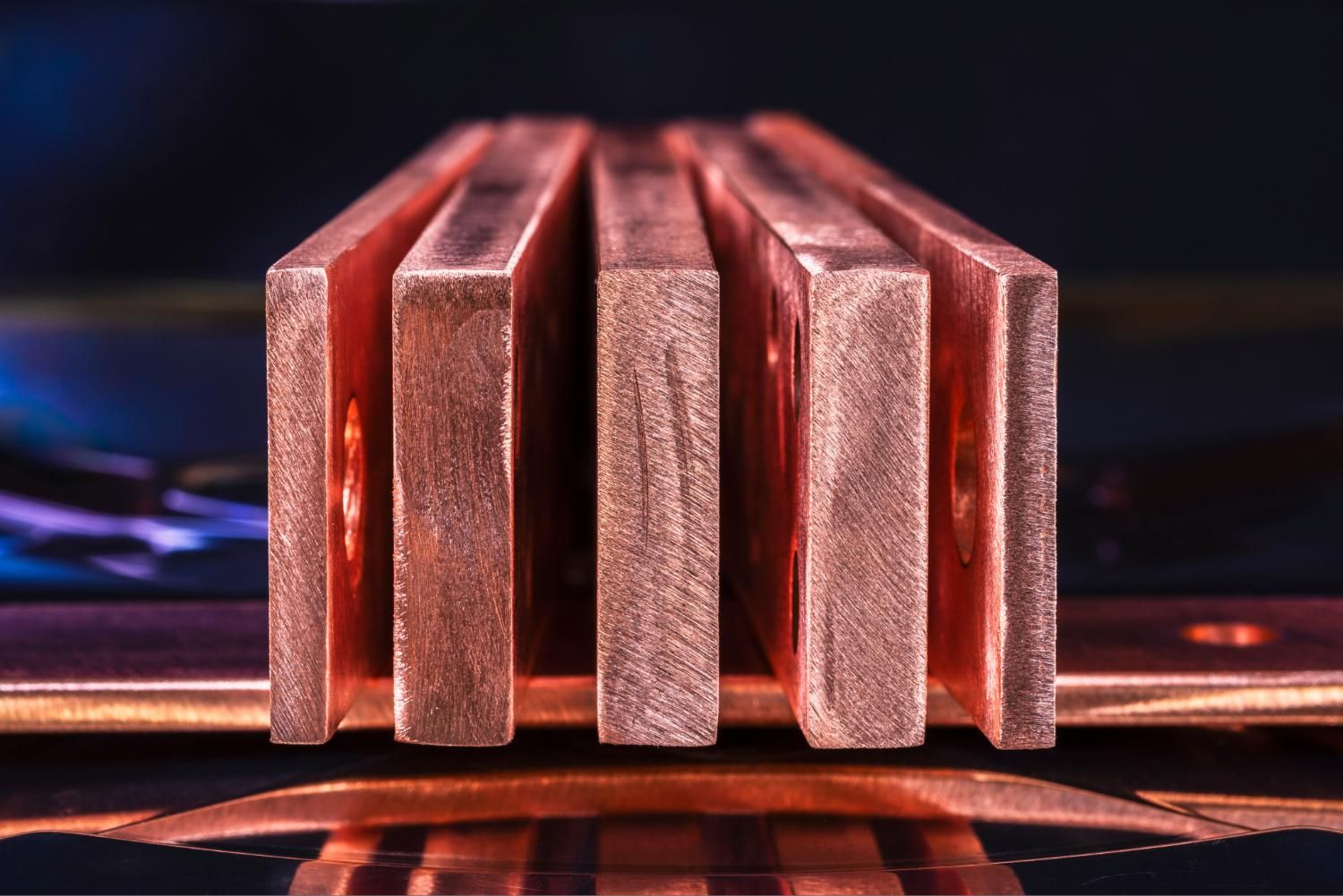
September 02, 2024
Up to 18.5% Copper & 34.8% Zinc in initial pXRF readings* on drillcore
Golden Deeps Ltd (ASX: GED) is pleased to announce the intersection of significant sulphide mineralisation in all three completed diamond drillholes at its 100% owned Havilah Project in the Lachlan Fold Belt Copper-Gold Province of central NSW (see Figure 1, below, and regional location, Figures 3 and 4).
- Thick copper and zinc sulphide mineralisation has been intersected in diamond drilling of key targets at the Company’s Havilah Project in the world-class Lachlan Fold Belt Copper-Gold Province of NSW1,2 (see Hazelbrook Prospect plan - Figure 1, cross section - Figure 2 and location plans - Figures 3 and 4).
- Diamond drillhole HVD003, which tested the extensive Hazelbrook copper soil and rockchip (>1% Cu) anomaly3, intersected patches of semi-massive copper (chalcopyrite) and zinc (sphalerite) sulphides as well as vein and disseminated sulphides across an 80m zone in the targeted Sofala Volcanics (see Image 1 showing the sulphide mineralisation; Appendix 1 for drillhole details & Appendix 2 for descriptions of mineralisation).
- The mineralised intersection in HVD003 included a 28m zone (from 85.8m) of more intense sulphide mineralisation which produced high-grade portable XRF (pXRF) readings of up to 18.5% Cu and 34.8% Zn, averaging 0.5% Cu and 0.7% Zn* (see Appendix 3 for full tables of pXRF readings and Cautionary Note below).
- Diamond hole HVD001, which tested the Hazelbrook North Cu-Zn-Au anomaly3, intersected 40m of silicified breccia/veining and disseminated sulphides (py +/-cpy, sph) from surface, and HVD002, which tested a strong Induced Polarisation (IP) anomaly1, intersected a 130m zone of altered mafic volcanics with scattered veinlets and disseminations of pyrite and rare chalcopyrite (see Figure 1, location, and Appendix 2, descriptions).
- The diamond drilling program continues with HVD004 testing the Hazelbrook anomaly 200m along strike to the northeast of HVD003, again under rockchip sample values of >1% Cu3 (see Figure 1).
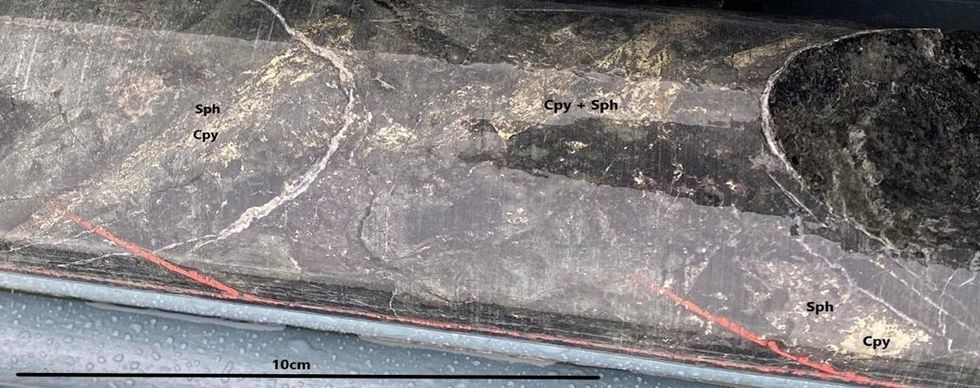
*Cautionary Note in relation to disclosure of visual estimates and pXRF readings described in this release and detailed in Appendix 2 and 3 respectively: The Company cautions that visual estimates of sulphide mineralisation abundance and pXRF readings should never be considered a proxy or substitute for laboratory analyses. Laboratory assays (ICP MS/OES and Fire Assay for gold) are required to determine representative grades and intervals of the elements associated with the visible mineralisation reported from geological logging and pXRF readings. Core is being sampled for submission to ALS laboratories in Orange, NSW. Laboratory analytical results are expected within 3 to 6 weeks.
Golden Deeps CEO Jon Dugdale commented: “The intersection of sulphide mineralisation in all three initial holes at Havilah, including thick zones of copper and zinc sulphide mineralisation in HVD003, indicates we’re on top of a large porphyry-sulphide system with similar characteristics to other major copper-gold discoveries in the Lachlan Fold Belt such as Cadia-Ridgeway and the recent Boda-Kaiser discovery.
“We look forward to completing the remainder of our diamond drilling program and receiving the laboratory results from the holes completed, which will be released as soon as they come to hand and are compiled.”
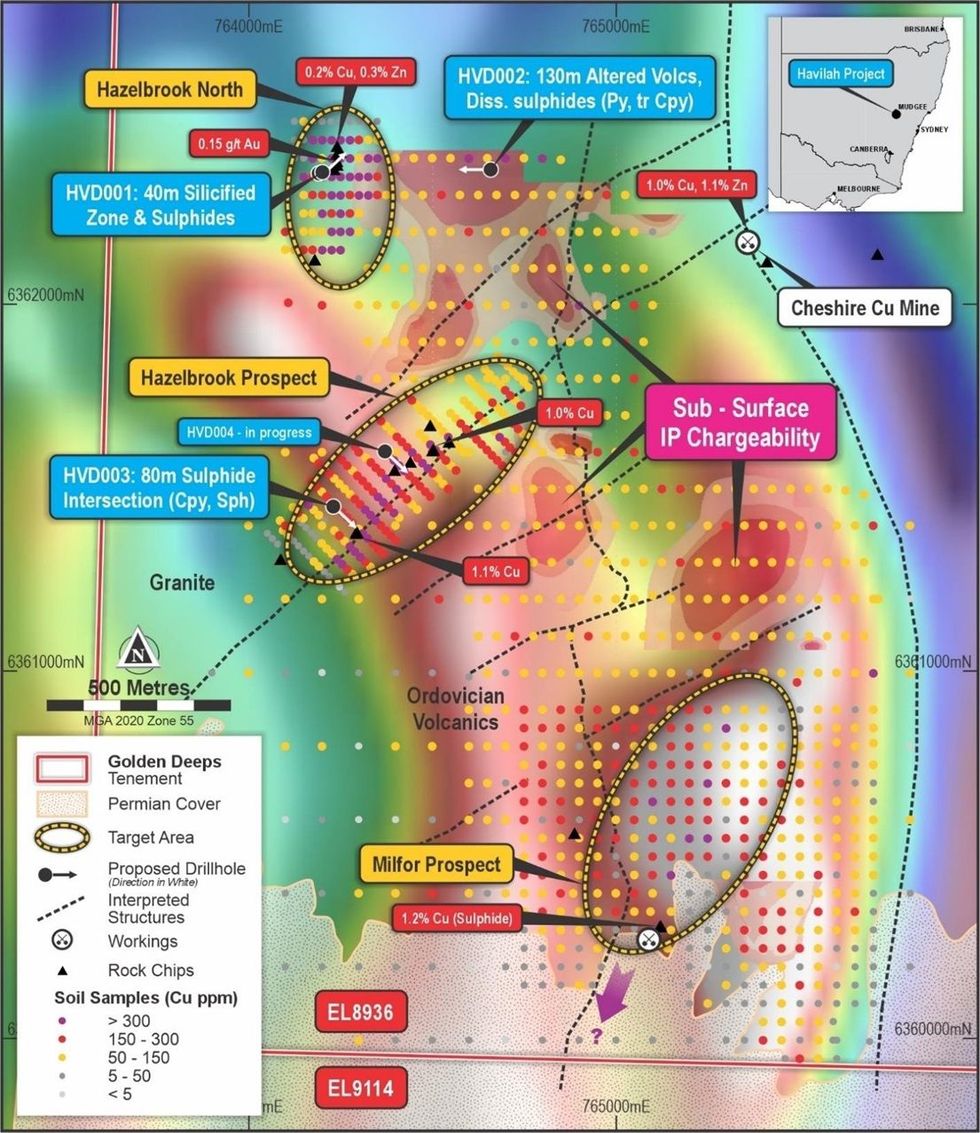
The third hole of the program, HVD003, tested the Hazelbrook target where an extensive northeast-southwest trending copper-zinc soil anomaly has been defined with rockchip values of over 1% Cu3 (Figure 1).
HVD003 intersected a sulphide mineralised zone from 85m to 119m which included patches and stringers (averaging 1-2%) of the copper-sulphide - chalcopyrite and the zinc-sulphide - sphalerite. These patches occur within extensively altered (Ordovician) mafic volcanic/volcanoclastic rocks with disseminated chalcopyrite-sphalerite-pyrite mineralisation which occurs from 85m to 166m (over 80m) (see Appendix 2).
The mineralisation aligns with the surface soil and rockchip copper-zinc anomaly, striking northeast, dipping to the northwest, and the drilling intersection approximating true width (see cross section, Figure 2, below).
Click here for the full ASX Release
This article includes content from Golden Deeps, licensed for the purpose of publishing on Investing News Australia. This article does not constitute financial product advice. It is your responsibility to perform proper due diligence before acting upon any information provided here. Please refer to our full disclaimer here.
The Conversation (0)
4h
Top 5 Junior Copper Stocks on the TSXV in 2025
Junior copper stocks are seeing significant support from the copper supply/demand story in 2025 as companies work to make the next big copper discovery.Copper markets tightened in 2025 as demand for the red metal grew steadily and supply was impacted by significant disruptions. The price was... Keep Reading...
5h
Low-impact, High-reward ISR Copper Extraction Gains Investment Momentum
In the delicate balancing act between meeting the rising global demand for critical minerals and ensuring environmental responsibility in resource extraction, processes and technologies that can achieve both aims are winning in the eyes of junior explorers and investors.In copper mining, in-situ... Keep Reading...
12 December
PPC, Lundin Freeze 2026 Processing Fees as Smelters Near Breaking Point
Japan’s largest copper smelter has secured a rare reprieve in one of the tightest processing-fee environments the industry has ever seen.According to media reports, Pan Pacific Copper has agreed with Lundin Mining (TSX:LUN,OTC Pink:LUNMF) to roll over treatment and refining charges for 2026... Keep Reading...
11 December
5 Best-performing Copper Stocks on the TSX in 2025
Copper prices were volatile in 2025 amid several competing narratives, including the possibility of a global recession early in the year and tariff measures in July. By the end of the year, prices found support as supply and demand conditions came into focus and pointed to a deepening supply... Keep Reading...
11 December
Top 5 ASX Copper Stocks of 2025
Copper prices have been volatile in 2025 due to geopolitical events, plus shifting supply/demand dynamics. Overall, prices were on an upward trajectory throughout the year as demand growth accelerated on the back of the development of artificial intelligence, the growing need for data centres... Keep Reading...
09 December
Copper Price Forecast: Top Trends for Copper in 2026
Copper prices were volatile in 2025 due to supply constraints, high demand and geopolitical concerns.Experts are calling for many of these trends to carry over into 2026, sending the market into deficit. Beyond supply and demand fundamentals, copper will also be met with global uncertainty as... Keep Reading...
Latest News
Latest Press Releases
Related News
TOP STOCKS
American Battery4.030.24
Aion Therapeutic0.10-0.01
Cybin Corp2.140.00
